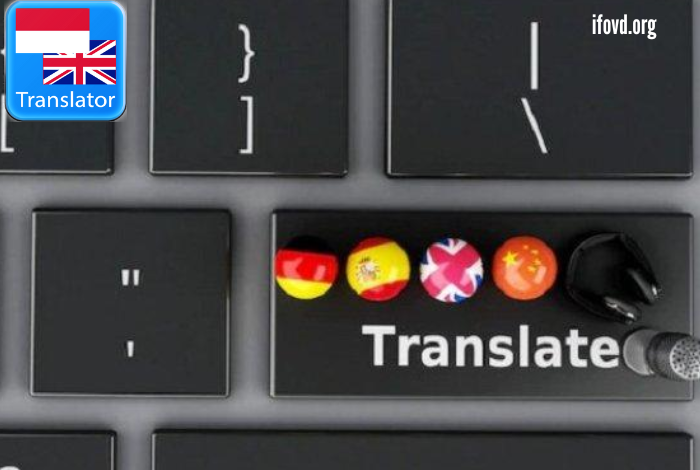Terjemahan Indonesia Inggris

In our increasingly interconnected world, language barriers can often hinder effective communication. However, the power of translation transcends these barriers, allowing individuals and businesses to connect with a global audience. One such language pair that holds immense significance is Indonesian to English, or Terjemahan Indonesia Inggris in Indonesian. In this article, we will explore the nuances of translating between these two languages, shedding light on the challenges and rewards of this intricate process.
The Complexity of Indonesian Language
Indonesian, or Bahasa Indonesia, is the official language of Indonesia, a diverse archipelago with more than 17,000 islands. While it is the most widely spoken language in the country, it’s essential to acknowledge the linguistic diversity across the region. Indonesian has absorbed various influences from Malay, Javanese, Dutch, Arabic, Sanskrit, and more. This linguistic melting pot has resulted in a language with a unique grammatical structure and vocabulary.
Vocabulary Enriched by Cultural Diversity
One of the fascinating aspects of Indonesian is its lexicon, which reflects the country’s rich cultural heritage. Words borrowed from different languages have been seamlessly integrated into Indonesian, making it a linguistic treasure trove. For instance, words like buku (book) and kantor (office) have Dutch origins, while saudara (brother) and saudari (sister) are derived from Sanskrit.
Lack of Grammatical Complexity
While Indonesian vocabulary may be rich, its grammar is relatively straightforward compared to languages like English. Indonesian has no verb conjugation, no gender, and no articles. However, it uses affixes to convey nuances, which can pose challenges for translators.
The Art of Translating Indonesian to English
Translating from Indonesian to English is not merely a mechanical process of substituting words. It is an art that involves understanding the cultural context, tone, and idiomatic expressions of both languages. Here are some key considerations:
Cultural Sensitivity
Language and culture are inseparable, and translating between Indonesian and English requires a deep understanding of both. Certain words or phrases in one language may carry cultural connotations that don’t exist in the other. For example, the Indonesian word salam means both greeting and peace. A translator must choose the appropriate English word based on context.
Idioms and Colloquialisms
Every language has its own set of idiomatic expressions and colloquialisms. These phrases can be particularly challenging to translate because they often have no direct equivalents in the target language. For example, the Indonesian phrase gajah mati meninggalkan gading literally translates to the elephant dies, leaving its ivory. In English, this concept may be expressed differently, such as leaving a legacy.
Maintaining Natural Flow
A skilled translator strives to make the translation sound natural and idiomatic in the target language. Literal translations can result in awkward and stilted sentences. Therefore, it’s essential to capture the essence of the original text while adapting it to the cultural and linguistic norms of the target audience.
Challenges in Indonesian to English Translation
While Indonesian to English translation can be a rewarding endeavor, it is not without its challenges. Some of the common difficulties faced by translators include.
Pronoun Ambiguity
Indonesian often lacks explicit gender markers, which can lead to ambiguity when translating into English, where gender-specific pronouns are essential. Translators must employ context clues to determine the correct gender, but this can sometimes be challenging.
Sentence Structure
Indonesian and English have different sentence structures. Indonesian typically follows a subject verb object (SVO) order, while English uses subject-verb-object (SVO) or subject object verb (SOV) depending on the context. Translating sentences with complex structures requires careful consideration to maintain clarity and coherence.
Cultural References
Indonesian texts may contain references to Indonesian culture, history, or geography that are unfamiliar to English-speaking readers. Translators must decide whether to provide explanations or find equivalent references that resonate with the target audience.
The Rewards of Indonesian to English Translation
Despite the challenges, Indonesian to English translation offers numerous rewards:
Facilitating Global Communication
Effective translation bridges the gap between cultures, enabling individuals and businesses in Indonesia to communicate their ideas, products, and services to an English-speaking audience and vice versa.
Promoting Cultural Exchange
Translation encourages cultural exchange by making Indonesian literature, art, and ideas accessible to the world. It also allows English speaking audiences to explore the rich cultural tapestry of Indonesia.
Conclusion
The art of translating from Indonesian to English is a complex and nuanced endeavor that requires a deep understanding of both languages and cultures. Translators must navigate linguistic differences, cultural nuances, and idiosyncrasies to create translations that are not only accurate but also convey the intended meaning and tone. Despite the challenges, the rewards of facilitating cross-cultural communication and promoting mutual understanding make Indonesian to English translation a valuable and enriching field.



